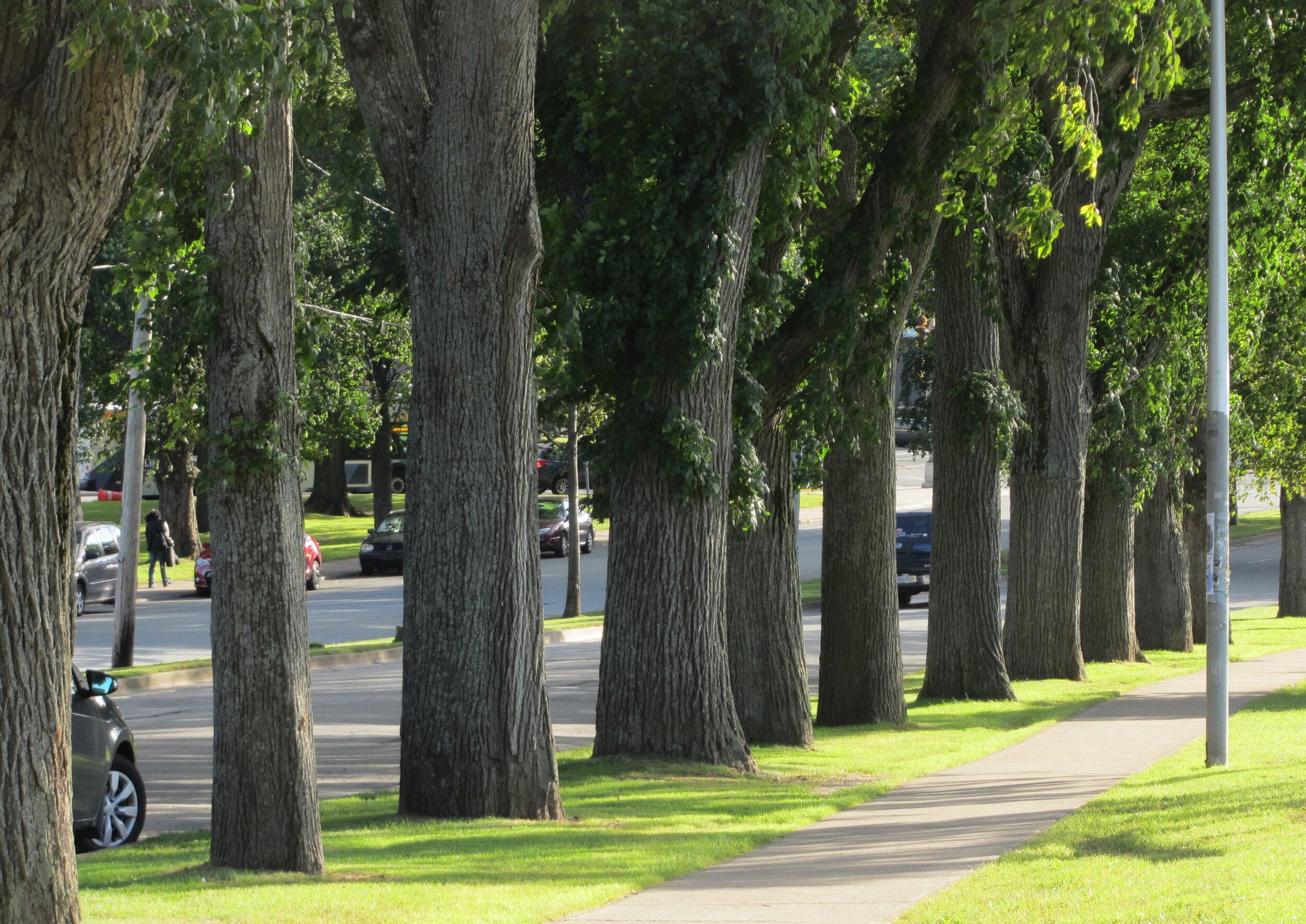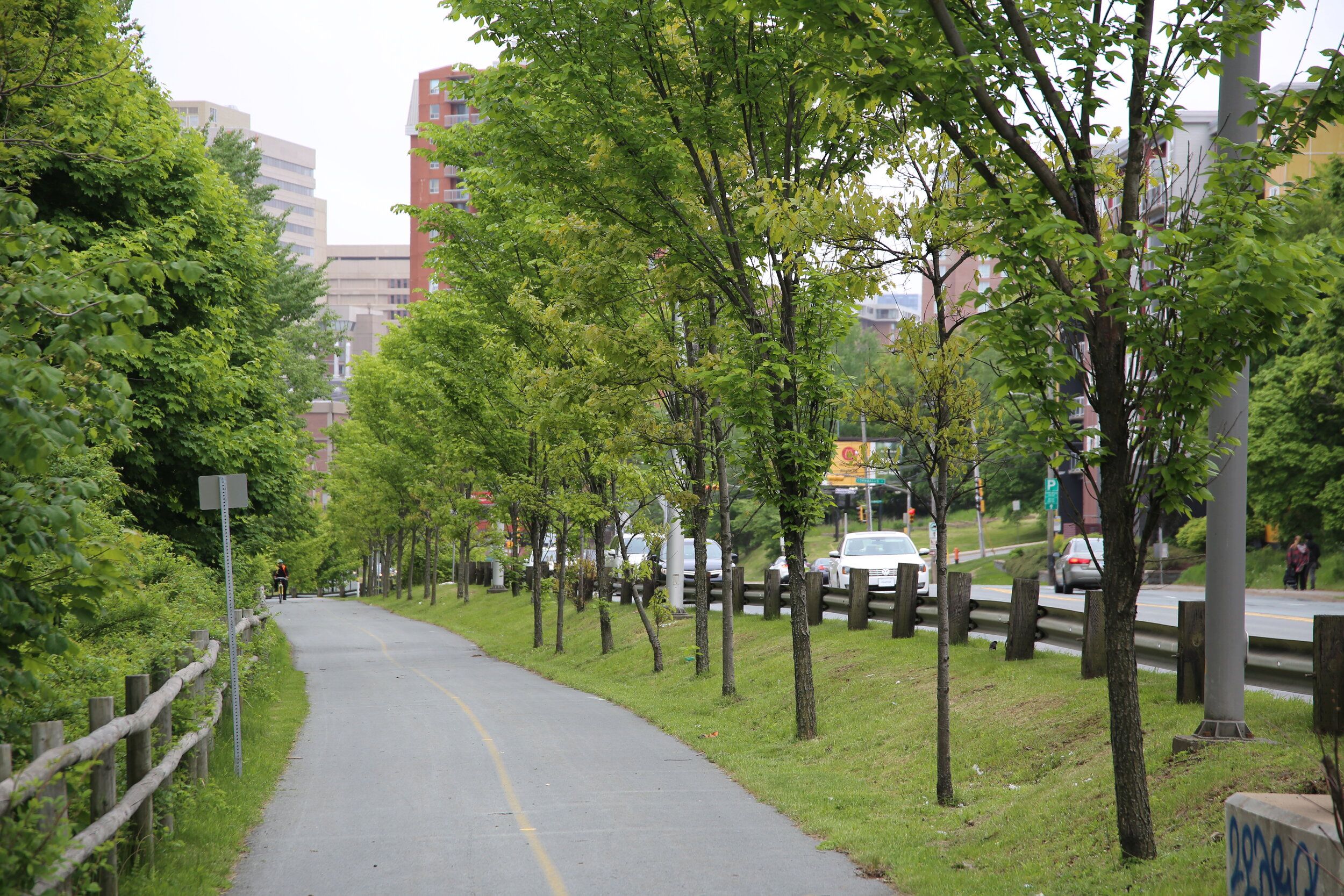Trees Help to Clean the Air around Us
Natalie Secen, Halifax Tree Project
2021-02-08
Globally, every year there are an estimated 4.2 million premature deaths due to outdoor air pollution. In Canada, this number sits at 14,600 [1]. Lucky for us, we have a readily available tool to help get these numbers down - trees help to combat poor air quality in several ways. They filter out a variety of air pollutants (including but not limited to sulfur dioxide, ozone, and nitrogen oxides) through stomatal absorption, where the pollutants diffuse into intercellular spaces and either react with inner leaf surfaces or get absorbed by water films to form acids. Furthermore, conveniently, trees need carbon dioxide to carry out photosynthetic processes, thus making them highly effective carbon sinks. And while technically not considered an air pollutant, carbon dioxide is the most prominent component of anthropogenic greenhouse gas emissions.
Besides stomatal absorption, trees can also intercept particulate air pollutants via retention on the plant’s surface area. However, it is important to note that much of these intercepted particulates are often resuspended to the atmosphere, especially during dry, windy periods. The build-up of pollutants on a tree’s leaves can also affect photosynthetic capacity, reducing a tree’s ability to absorb pollutants through its stomata. Lastly, trees emit volatile organic compounds (VOCs), which in the presence of sunlight react with nitrogen oxides in vehicle fumes to create ozone. Some research shows that average annual percent air quality improvement in cities with respect to human health can be as little as less than one percent (although this is likely an underestimate; and remember, more trees mean more absorption potential!) [2]
While I have just presented a case that seems to go against the title of this blog, I’d like to make it clear that I am wholehearted in favour of planting trees as a way to clean the air. The point I am trying to make is that there are so many factors to consider when using the urban forest as a tool to manage air quality. For example, we know that some species emit more VOCs than others, so we can look to prioritize low emitters in planting programs. Other trees are better able to trap particulate matter, even when tested in a wind tunnel [3]. Research tells us that the tree canopy can, under certain conditions, trap pollutants in an area and decrease air quality, but it can also act as a buffer and shield us from pollutants (see photos). So, looking to the research can really help us to get the most out of our urban forest. And while the large number of variables to be accounted for make air quality calculations and modelling extremely complex, researchers are only getting more confident in their calculations.
Indirectly, trees do so much more than just absorbing pollutants to improve air quality. They shade surfaces and reduce temperatures, thereby reducing the need for conventional air conditioning and reducing the risk associated with harmful ground-level pollutants. A successful urban planting plan in the context of “cleaning the air” is all about putting the right trees in the right places to maximize both direct and indirect benefits – as with most things in urban planning, it is rarely a one-size-fits-all situation.
References
1. https://www.canada.ca/en/environment-climate-change/services/environmental-indicators/air-pollution-drivers-impacts.html
2. Nowak, D. J., Hirabayashi, S., Doyle, M., McGovern, M., and Pasher, J. (2018) Air pollution removal by urban forests in Canada and its effect on air quality and human health. Urban Forestry & Urban Greening (29), 40-48.
3. Wang, H., Maher, B. A., Mahmed, I. and Davison, B. (2019). Efficient removal of ultrafine particles from diesel exhaust by selected tree species: Implications for roadside planting for improving the quality of urban air. Environmental Science and Technology (53), 6906-6916.

